New York City is a treasure trove of iconic landmarks, cuisines, and hidden gems. It is also home to the largest Jewish community in the U.S.
Editor’s note: This article is part of our series on travel guides to your favorite destinations. Check out our Vienna, Budapest, Berlin, Kraków, Toronto, Milan and Rome guides, and look out for guides to other cities (including Brooklyn in NYC) coming soon.
Since the 17th century, when a group of Sephardic Jews first set foot in New Amsterdam, Jewish immigrants from around the world have made their mark, contributing to the cultural mosaic that defines New York City today.
Whether you’re interested in visiting historic synagogues, immersing yourself in its rich past through museums or tours, or looking for the best Jewish food, we’ve got you covered to ensure your trip to Manhattan is jam-packed with the richness of its Jewish heritage.
What to see
The Jewish Museum
There’s no better place to explore Jewish culture in New York than the Jewish Museum. Located on New York City’s Museum Mile in an early 20th-century mansion, its collection of more than 30,000 works of art showcases the vibrancy and complexity of the global Jewish experience. (Tip: Tickets are free on Saturdays!).
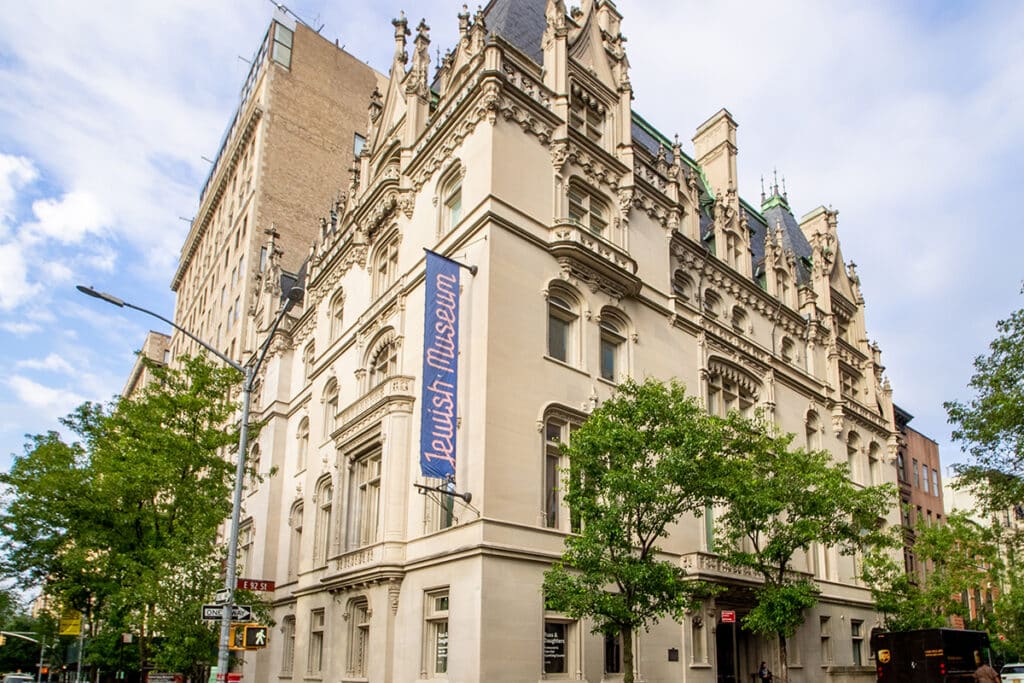
The Museum of Jewish Heritage
Located in Battery Park right by the Hudson River, the Museum of Jewish Heritage is a living memorial to the Holocaust. Through its powerful exhibitions, you can hear moving stories of survivors and learn about the importance of Holocaust education so we may never forget the victims and their legacy.
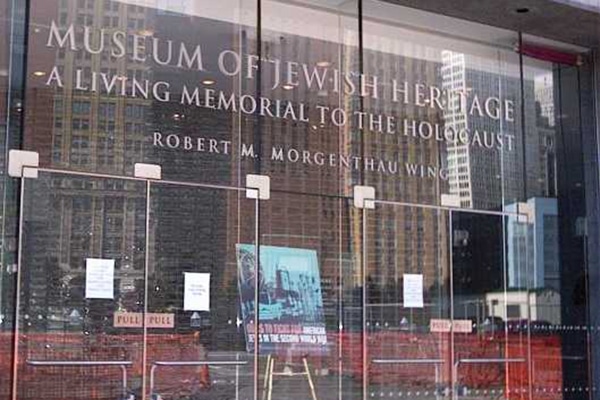
The Museum at Eldridge Street
Out of all the synagogues in New York City, there is only one that has a museum: the Museum at Eldridge Street. Housed in the first synagogue in the U.S. built by Eastern European Jewish immigrants, the museum showcases what immigrant life was like on the Lower East Side in the late 19th and early 20th centuries.
The synagogue itself is a site to behold, known for its architecture, specifically its remarkable rose window of mesmerizing shades of blue.
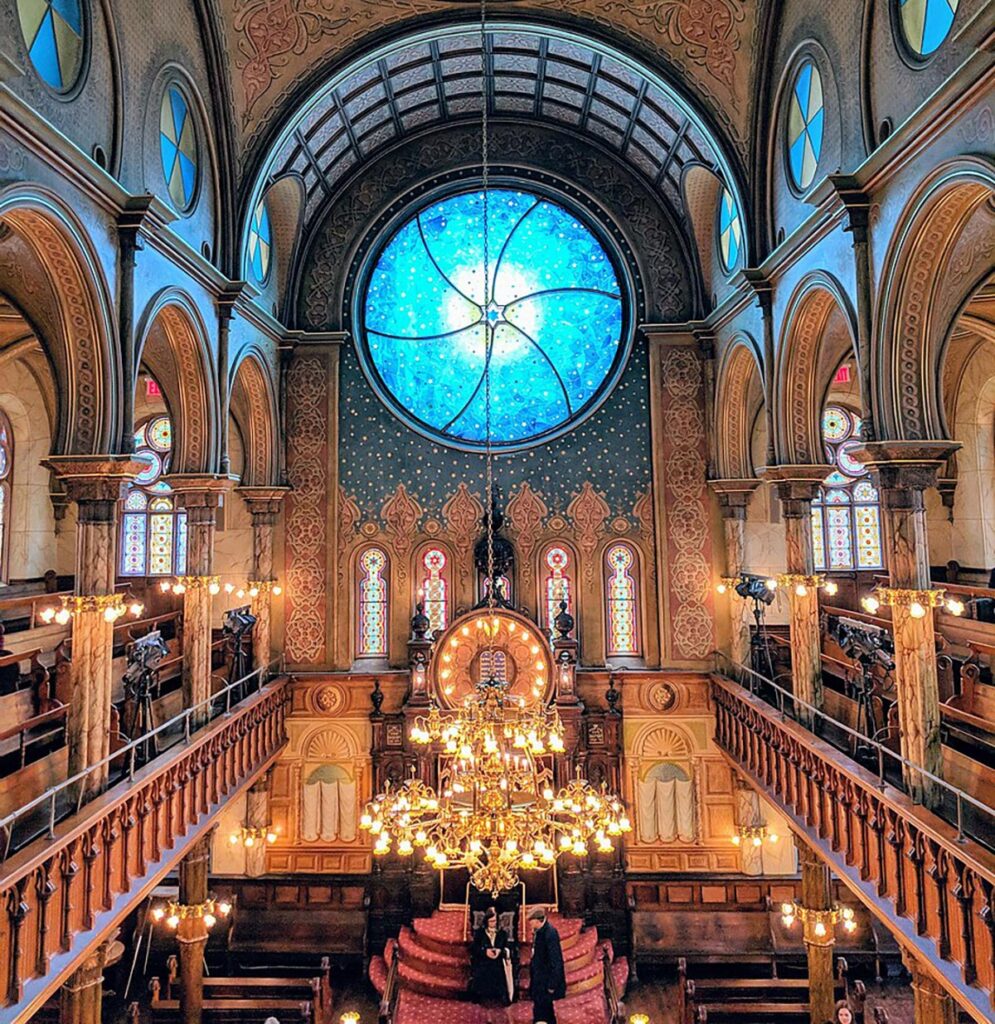
Statue of Liberty
For almost 200 years, the Statue of Liberty has proudly stood over the Hudson River welcoming immigrants as a symbol of freedom and a beacon of hope.
The Jewish connection to the Statue of Liberty is the verse of poetry engraved on the inside of her pedestal: “Give me your tired, your poor, Your huddled masses yearning to breathe free…”
These powerful words are from Emma Lazarus’ poem “The New Colossus.” Lazarus, a Jewish American with Portuguese roots, composed this poem in 1883 to raise money for the pedestal’s construction and advocate for refugees fleeing the pogroms of Eastern Europe. Marvel at the plaque and ascend the statue to take in the breathtaking view of the New York City skyline.
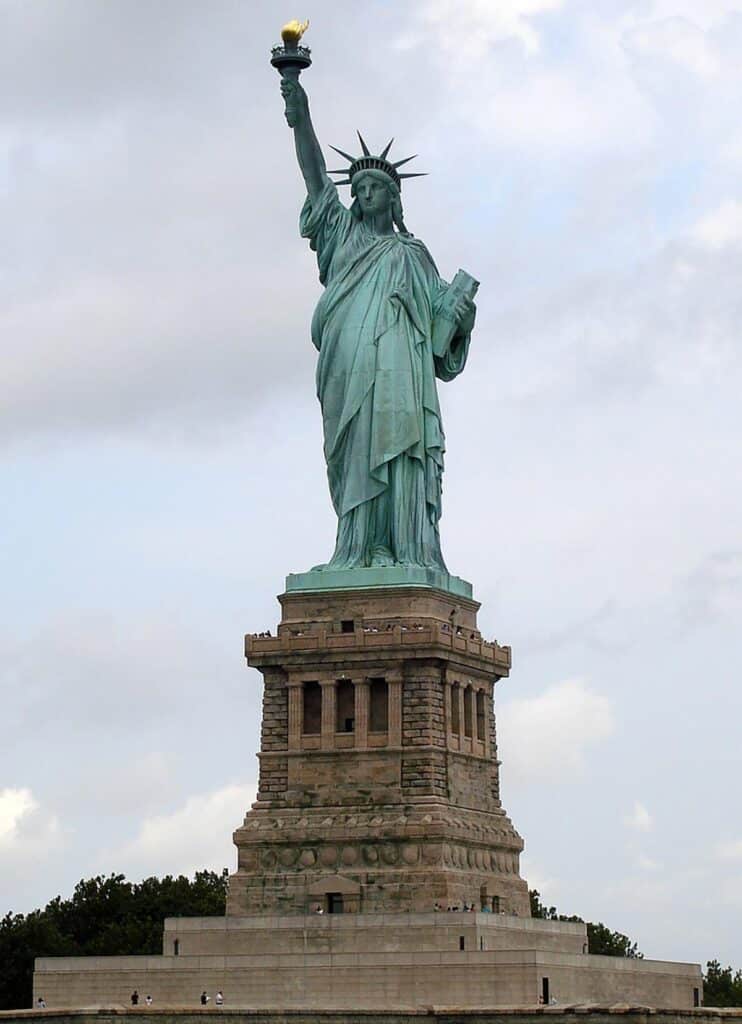
Ellis Island
While you’re out in New York Harbor, be sure to explore the history of American immigration at the Ellis Island National Museum of Immigration.
Between 1892 and 1924, over two million Jews passed through its grand Registry Room, where they either went through the process of becoming American citizens or were turned away for various reasons like health issues or economic concerns.
At the museum, you can read eyewitness accounts, see where people slept while in the process of becoming citizens, and search the nearly 65 million passenger records for your Jewish ancestors.
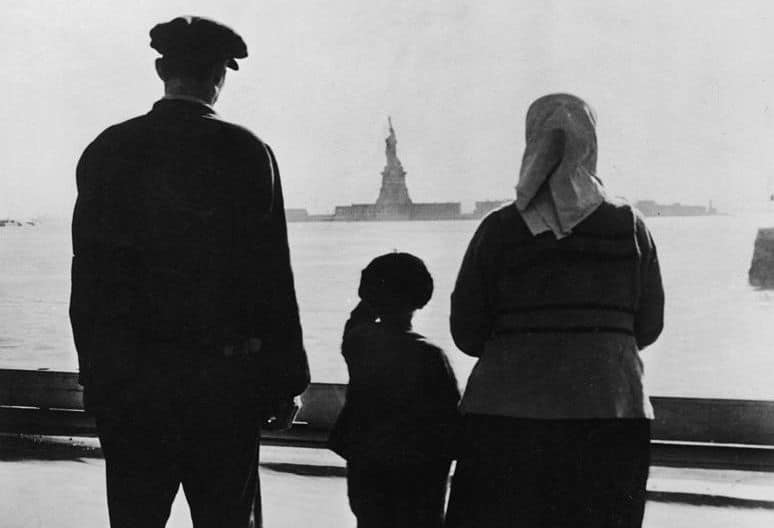
Golda Meir Memorial Square
While on your way to a Broadway show, be sure to visit Golda Meir Memorial Square, located between 39th and 40th Streets on Broadway, just south of Times Square, to pay tribute to the late Israeli prime minister.
The plaza was dedicated to Israel’s “Iron Lady” in 1979 on the first anniversary of her death. The plaza is a great people-watching spot, complete with tables, benches, and a bust honoring the Israeli feminist icon.
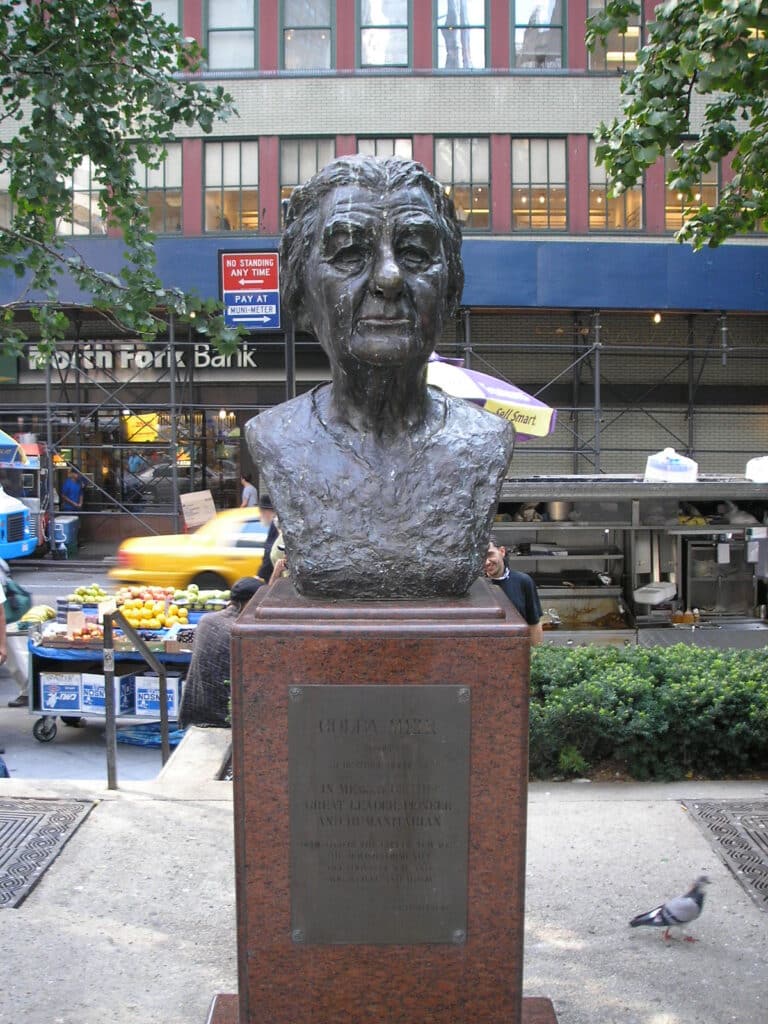
Yiddish Walk of Fame
On the corner of Second Avenue and 10th Street, you’ll find more than 30 faded slabs of granite embedded in the sidewalk, each adorned with a gold star bearing the name of an actor from Yiddish theater.
This is the Yiddish Walk of Fame, established by Second Avenue Deli outside its original location. This landmark proudly pays homage to the original Yiddish Theatre District, an era beginning in the late 19th century when Yiddish theaters dotted the neighborhood, and Second Avenue was known as “Jewish Broadway.”
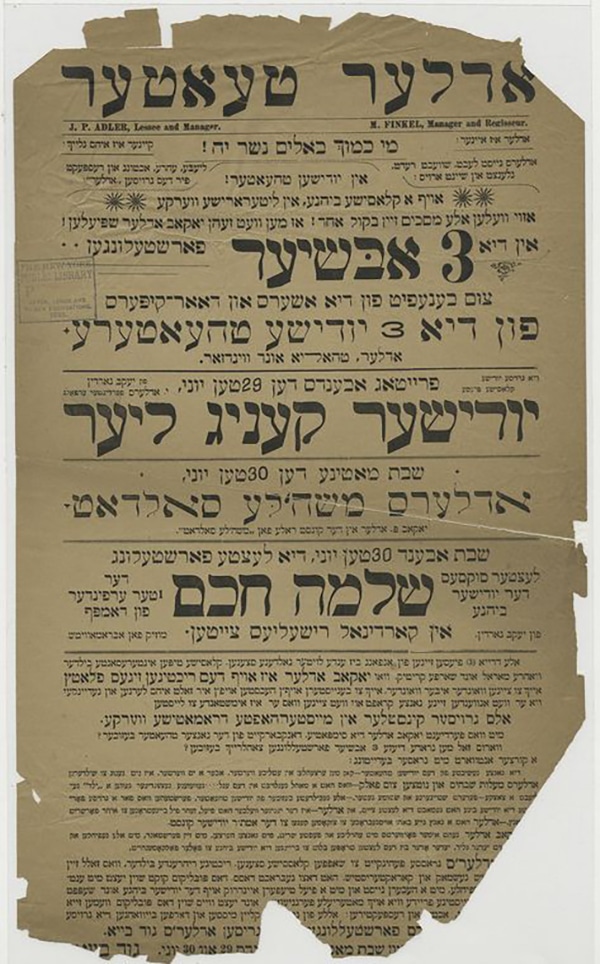
What to Do
Jewish Walking Tours
There are several walking tours available that take you through historically Jewish neighborhoods:
The Lower East Side Jewish Conservancy (LESJC) brings the cradle of American Jewish civilization to life on its Lower East Side tour. As you stroll down Hester Street and other locations of note, you’ll see where new immigrants settled after their arrival from Ellis Island.
If you’ve ever wanted to explore where American Jewish history all began, LESJC also gives a fascinating glimpse into the first Jews to set foot in the New World, on their Colonial Jewish New Amsterdam tour. Learn about the first Jewish individuals who fought for their rights in colonial New York, the Jewish connection to the New York Stock Exchange, and more.
Before Harlem became known for jazz and the civil rights movement, it was once home to the third-largest Jewish community in the world — just behind Warsaw, Poland, and the Lower East Side. LESJC also offers an insightful walking tour of Jewish Harlem, uncovering the neighborhood’s Jewish past with stops at what were once some of the most legendary Jewish institutions.
New York Jewish Film Festival
If you’re visiting New York City in January, you won’t want to miss the New York Jewish Film Festival. Each year for two weeks, the Jewish Museum and Film at Lincoln Center team up to screen a wide range of movies from around the world that explore the Jewish experience.
In addition to the films, which include heartwarming comedy and thought-provoking documentaries, the festival also includes panel discussions with filmmakers. Buy some popcorn and immerse yourself in Jewish cinema.
Shop for Judaica
Discover traditional Jewish gifts at West Side Judaica & Bookstore, one of Manhattan’s last remaining Judaica stores, located at 89th Street and Broadway. From kiddush cups to prayer books, you’ll find a range of Judaica items to choose from at this store that’s been in business for 90 years.
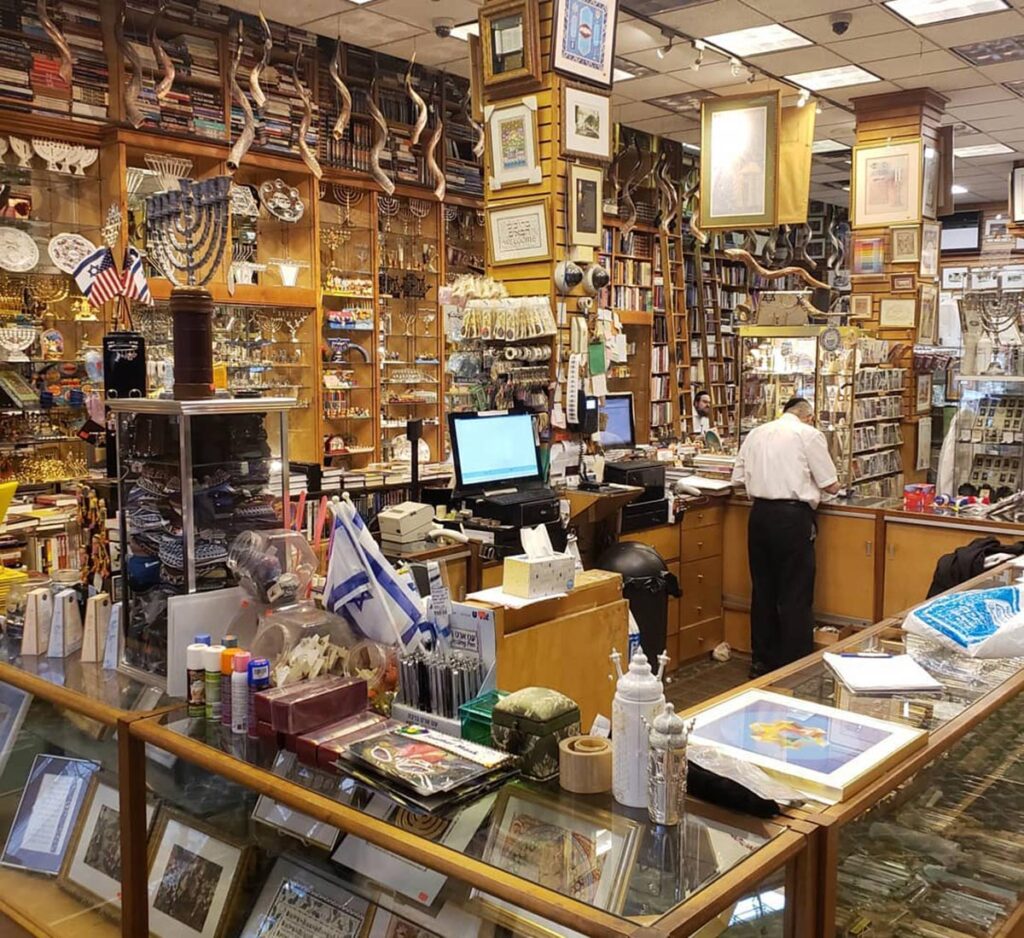
What to Eat
The kosher scene
There is a wide variety of kosher restaurants in Manhattan catering to different budgets and tastes. If you’re in the mood for meat, check out Talia’s Steakhouse, Mr. Broadway and Mocha Burger, all of which are glatt-kosher.
For kosher steakhouses, try the classic restaurants Reserve Cut and Le Marais.
For an upscale dining experience, Israeli chef Eyal Shani’s new kosher restaurant Malka won’t disappoint, boasting incredible food and trendy vibes. For a special occasion restaurant, try Mike’s Bistro.
Popular dairy restaurants like Noi Due Café and Tiberias include robust menus with pasta, pizza, fish, and more. For kosher pizza, try Bravo or Saba’s (we recommend their Upper East Side location).
Craving Chinese food? Bodhi Kosher Vegetarian Restaurant offers a kosher Cantonese-style cuisine, from meatless dumplings to noodles.
Classic New York fare
A trip to New York City would be incomplete without enjoying delicious deli cuisine, made popular by Jewish immigrants who brought their Eastern European culture to the Lower East Side.
To have what she’s having, visit the famous Katz’s Delicatessen, New York’s oldest deli, for Jewish specialties like the legendary pastrami sandwich and matzo ball soup.
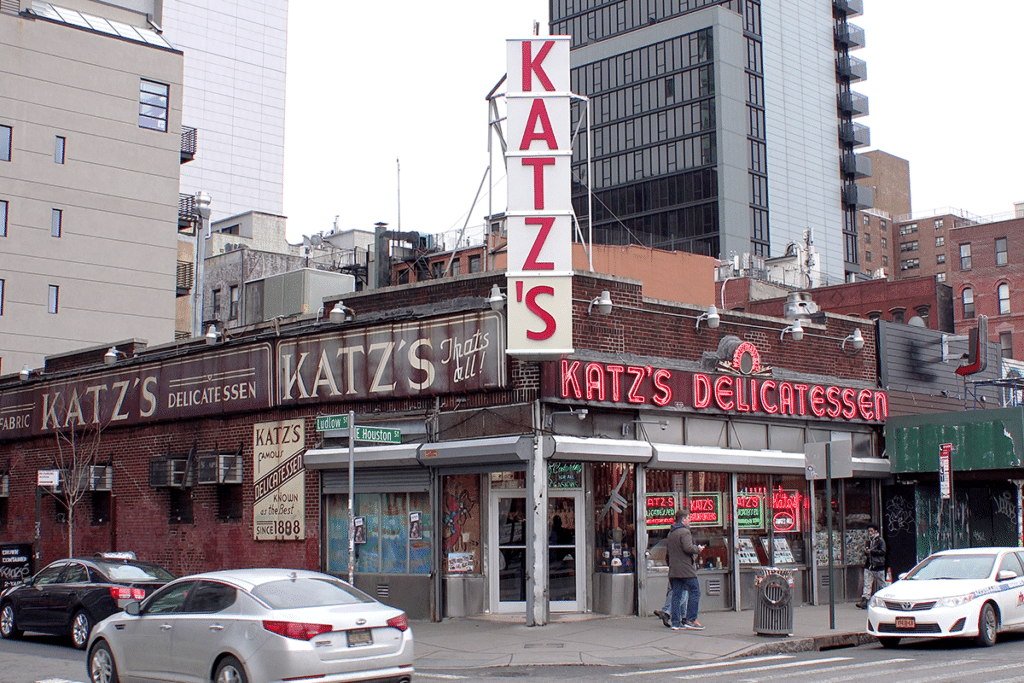
The Lower East Side is chock-full of Ashkenazi eateries like Russ & Daughters. What started in the early 20th century as peddling herring from a pushcart is now one of the most iconic Jewish dining establishments. If you’re a fan of bagels with smoked salmon or potato latkes, you will feel right at home.
Another iconic Lower East Side location you will not want to miss is Yonah Schimmel’s Knish Bakery, the last remaining knish bakery in Manhattan.
This Eastern European potato-filled snack gained popularity among the Jewish immigrant community, and Yonah Schimmel’s shop is a favorite of celebrities like Larry David and Evan Rachel Wood.
Israeli scene
You won’t have any trouble finding an Israeli restaurant in Manhattan. Popular options with flavorful dishes include 12 Chairs Cafe, Miriam, and Miznon (its Times Square location will soon be kosher).
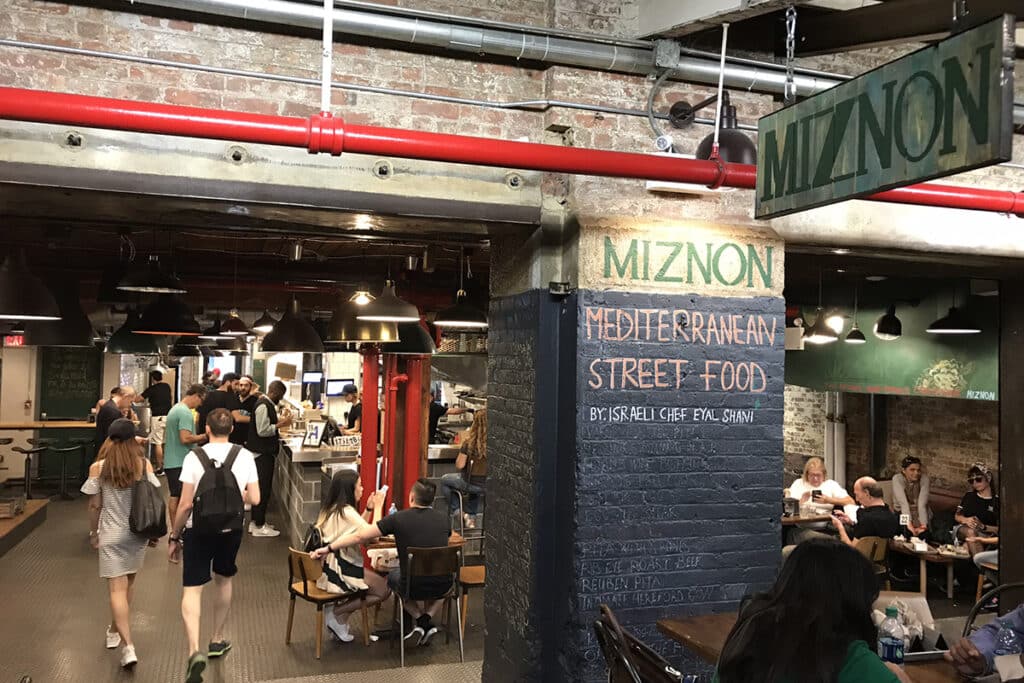
Where to spend Shabbat
Chabad has many locations in the city to accommodate Shabbat meals and services.
Synagogues like Central Synagogue, B’nai Jeshurun and Park Avenue Synagogue are open to the public and offer Friday night and Saturday morning services.
Some organizations host Shabbat dinners for young professionals and are extremely welcoming to travelers, like Manhattan Jewish Experience.
When will you be visiting New York City? Let us know on Instagram, Twitter, and TikTok!
